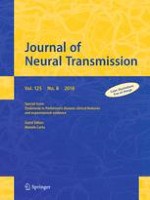Published in:

01-08-2018 | Neurology and Preclinical Neurological Studies - Review Article
Impulse control disorders in Parkinson’s disease
Authors:
Ana Marques, Franck Durif, Pierre-Olivier Fernagut
Published in:
Journal of Neural Transmission
|
Issue 8/2018
Login to get access
Abstract
Impulse control disorders (ICD) are frequent side effects of dopamine replacement therapy (DRT) used in Parkinson’s disease (PD) with devastating consequences on the patients and caregivers. ICD are behavioural addictions including compulsive gambling, shopping, sexual behaviour, and binge eating that are mainly associated with dopamine D2/D3 agonists. Their management is a real clinical challenge due to the lack of therapeutic alternative. Clinical studies have identified demographic and clinical risk factors for ICD such as younger age at disease onset, male gender, prior history of depression or substance abuse, REM sleep behaviour disorders and higher rate of dyskinesia. PD patients with ICD may also have a specific pattern of dopaminergic denervation in the ventral striatum. Specific evaluation tools have now been designed to better evaluate the severity and impact of ICD in PD. Patients with ICD display altered processing of reward and loss, and decisional bias associated with altered activity in cortical and subcortical areas such as the orbitofrontal cortex, amygdala, insula, anterior cingular cortex, and ventral striatum. Preclinical studies have demonstrated that D2/D3 agonists induce impairments in behavioural processes likely relevant to ICD such as risk-taking behaviour, preference for uncertainty, perseverative responding and sustained drive to engage in gambling-like behaviour. Whether interactions between dopamine denervation and DRT significantly contribute to the pathogenesis of ICD remains poorly understood so far, although features unique to PD have been identified in patients with ICD. Large-scale longitudinal studies are needed to better identify subjects with increased risk to develop ICD and develop therapeutic options.
